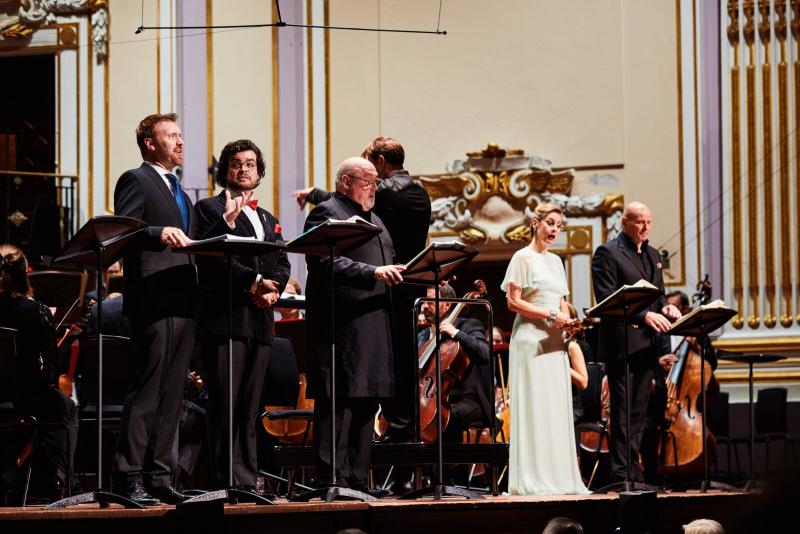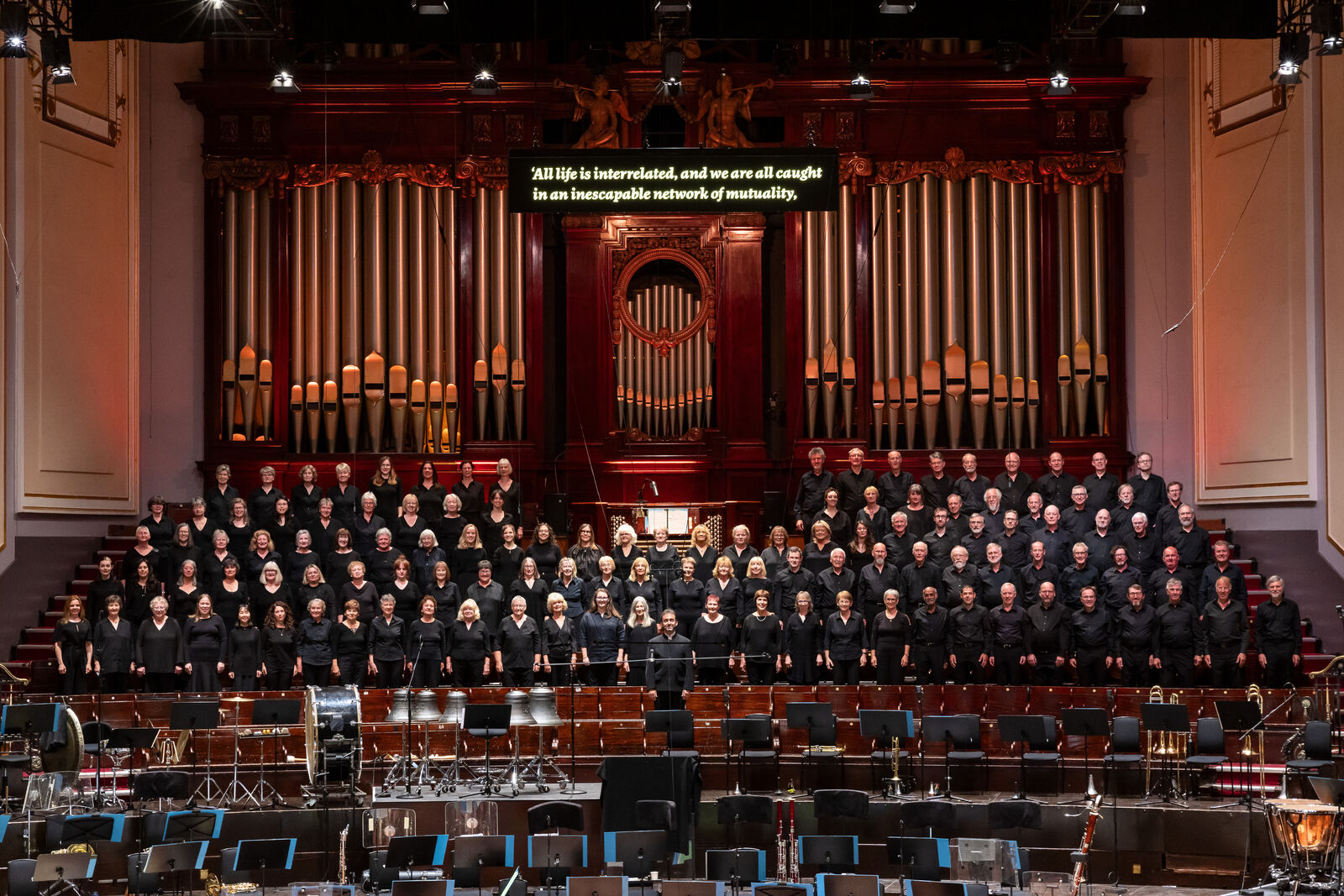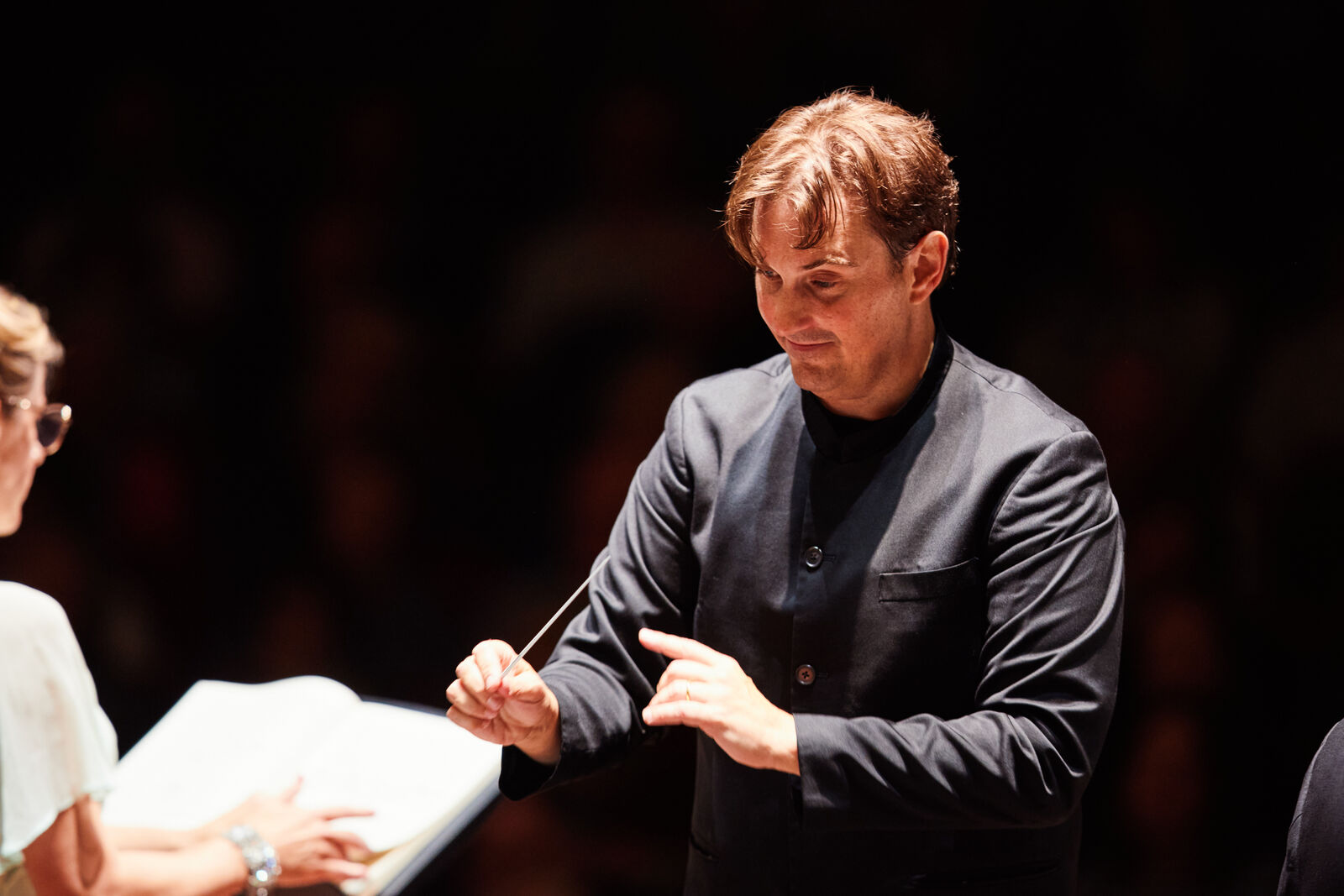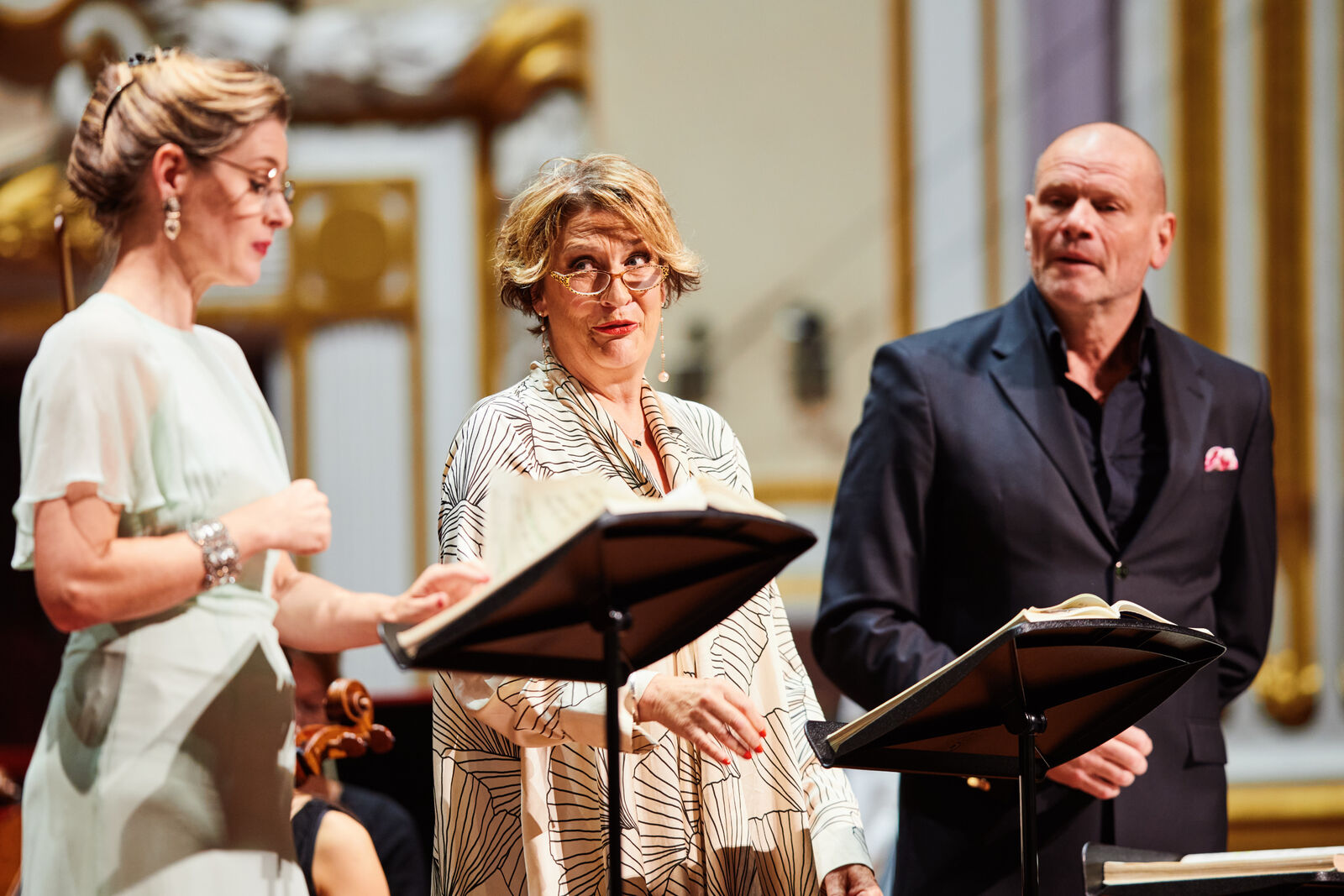Verdi's Requiem / Capriccio, Edinburgh International Festival 2024 review - words, music, judgement | reviews, news & interviews
Verdi's Requiem / Capriccio, Edinburgh International Festival 2024 review - words, music, judgement
Verdi's Requiem / Capriccio, Edinburgh International Festival 2024 review - words, music, judgement
Philharmonia Orchestra closes the festival with grandeur and intimacy

The Philharmonia’s residency was the centrepiece of the Edinburgh International Festival’s final weekend, and it’s right that the orchestra should be the focus because they were consistently the finest thing about both their Verdi Requiem and their concert performance of Richard Strauss’ last opera Capriccio.
First to Verdi. Not only was the playing rich and majestic, but there was terrific clarity, too, and I was repeatedly struck by how pristine the details were. I don’t think I’ve ever previously noticed the role of the piccolo, for example, and the quintet of horns made themselves thrillingly clear in all of the big climaxes. They also responded very well to conductor Santtu-Matias Rouvali, whose beat was so clear as to be almost comical, his arms flailing wide at some of the bigger moments.  That, however, was at the heart of the performance’s problems too. The orchestra know Rouvali well so they can respond to him much more cleanly than the singers, who don’t. On too many occasions, in fact, the singers and the orchestra seemed to think that Rouvali’s clipped conducting meant different things, and the ensemble was slack as a result. The very primary-colour nature of Rouvali’s beat meant that the big climaxes hung together impressively well (though his decision to have the extra trumpets backstage rather than in the auditorium made them all but inaudible at the climax of the “Tuba mirum”) but it meant that in the subtler moments, such as the very opening or the gentler sections of the “Lacrymosa”, the Edinburgh Festival Chorus (pictured above last year by Jess Shurte) couldn’t quite see where he was bringing them in and they were out of sync with the orchestra as a result. The soloists had that problem, too, which makes me think it’s his fault rather than theirs.
That, however, was at the heart of the performance’s problems too. The orchestra know Rouvali well so they can respond to him much more cleanly than the singers, who don’t. On too many occasions, in fact, the singers and the orchestra seemed to think that Rouvali’s clipped conducting meant different things, and the ensemble was slack as a result. The very primary-colour nature of Rouvali’s beat meant that the big climaxes hung together impressively well (though his decision to have the extra trumpets backstage rather than in the auditorium made them all but inaudible at the climax of the “Tuba mirum”) but it meant that in the subtler moments, such as the very opening or the gentler sections of the “Lacrymosa”, the Edinburgh Festival Chorus (pictured above last year by Jess Shurte) couldn’t quite see where he was bringing them in and they were out of sync with the orchestra as a result. The soloists had that problem, too, which makes me think it’s his fault rather than theirs.
Nor was this a vintage night for those soloists. Masabane Cecilia Rangwanasha demonstrated her gorgeously rich soprano to great effect, but she had a tendency to attack from below the note, and her pitching was uncomfortably out on too many occasions. Jennifer Johnston sang histrionically, to thrilling effect, but was a little pressed at the top of her range, while tenor René Barbera sang elegantly but often much too gently. Only bass Tareq Nazmi was completely successful, his huge instrument sounding dark and exciting in the “Confutatis”, baleful in the “Lux aeterna”.  There was also some terrific orchestral playing the following evening in Capriccio, the festival’s closing concert. The Philharmonia strings surged through composer Flamand’s love music and twinkled through the final scene, while the horns sounded sensational in the Moonlight Music. Alexander Soddy (pictured above) did a good job conducting, considering the size of the shoes he had to fill: this concert was originally to have been conducted by Sir Andrew Davis, who died back in April, and so it was dedicated to him as a memorial. Davis was one of the EIF’s most reliable podium performers, and will be hugely missed.
There was also some terrific orchestral playing the following evening in Capriccio, the festival’s closing concert. The Philharmonia strings surged through composer Flamand’s love music and twinkled through the final scene, while the horns sounded sensational in the Moonlight Music. Alexander Soddy (pictured above) did a good job conducting, considering the size of the shoes he had to fill: this concert was originally to have been conducted by Sir Andrew Davis, who died back in April, and so it was dedicated to him as a memorial. Davis was one of the EIF’s most reliable podium performers, and will be hugely missed.
But Capriccio is one of those pieces that I feel I ought to like more than I do. Critics and connoisseurs go into raptures about it, but there are acres of discussion that drive me bananas. Sure, the final scene is a marvel, but there’s a lot of self-referential navel-gazing to be got through before you get there, and no pity should be shown to the audience members who ostentatiously laugh at what passes for jokes. For me, therefore, a good Capriccio is one where the “conversations” fly by, and the performers realise that they’re part of an ensemble instead of trying to grab the attention by lingering in the limelight.  This one mostly did that with strong, if unremarkable, performances from Sebastian Kohlhepp’s ardent Flamand, and the businesslike Oliver of Stephen Marsh and Clairon of Sarah Connolly (pictured above with Malin Byström and Bo Skovhus). I struggle to love Malin Byström’s voice, which to me has a chilly edge to it that doesn’t suit Strauss’s overbrimming refulgences, but she sang the Countess very ably. Bo Skovhus was the finest actor of the bunch, and showed he still had the lyrical edge to his voice, and Peter Rose sang La Roche with bluff good humour, before badly running out of steam in his big monologue. It has come to something when Monsieur Taupe is one of the most finely drawn characters, but Rodell Rosel made a lot out of this very small part.
This one mostly did that with strong, if unremarkable, performances from Sebastian Kohlhepp’s ardent Flamand, and the businesslike Oliver of Stephen Marsh and Clairon of Sarah Connolly (pictured above with Malin Byström and Bo Skovhus). I struggle to love Malin Byström’s voice, which to me has a chilly edge to it that doesn’t suit Strauss’s overbrimming refulgences, but she sang the Countess very ably. Bo Skovhus was the finest actor of the bunch, and showed he still had the lyrical edge to his voice, and Peter Rose sang La Roche with bluff good humour, before badly running out of steam in his big monologue. It has come to something when Monsieur Taupe is one of the most finely drawn characters, but Rodell Rosel made a lot out of this very small part.
And yet I was prepared to forgive much for the final scene, where Soddy pulled back the tempo so much that both audience and performers were allowed to wallow in the sheer beauty of the Moonlight music and Byström sang the Countess’s closing monologue from memory, sounding much richer and more relaxed as a result. Here not just words and music, but also performer and work, finally slotted together as a perfect fit.
rating
Share this article
The future of Arts Journalism
You can stop theartsdesk.com closing!
We urgently need financing to survive. Our fundraising drive has thus far raised £49,000 but we need to reach £100,000 or we will be forced to close. Please contribute here: https://gofund.me/c3f6033d
And if you can forward this information to anyone who might assist, we’d be grateful.

Subscribe to theartsdesk.com
Thank you for continuing to read our work on theartsdesk.com. For unlimited access to every article in its entirety, including our archive of more than 15,000 pieces, we're asking for £5 per month or £40 per year. We feel it's a very good deal, and hope you do too.
To take a subscription now simply click here.
And if you're looking for that extra gift for a friend or family member, why not treat them to a theartsdesk.com gift subscription?

Add comment